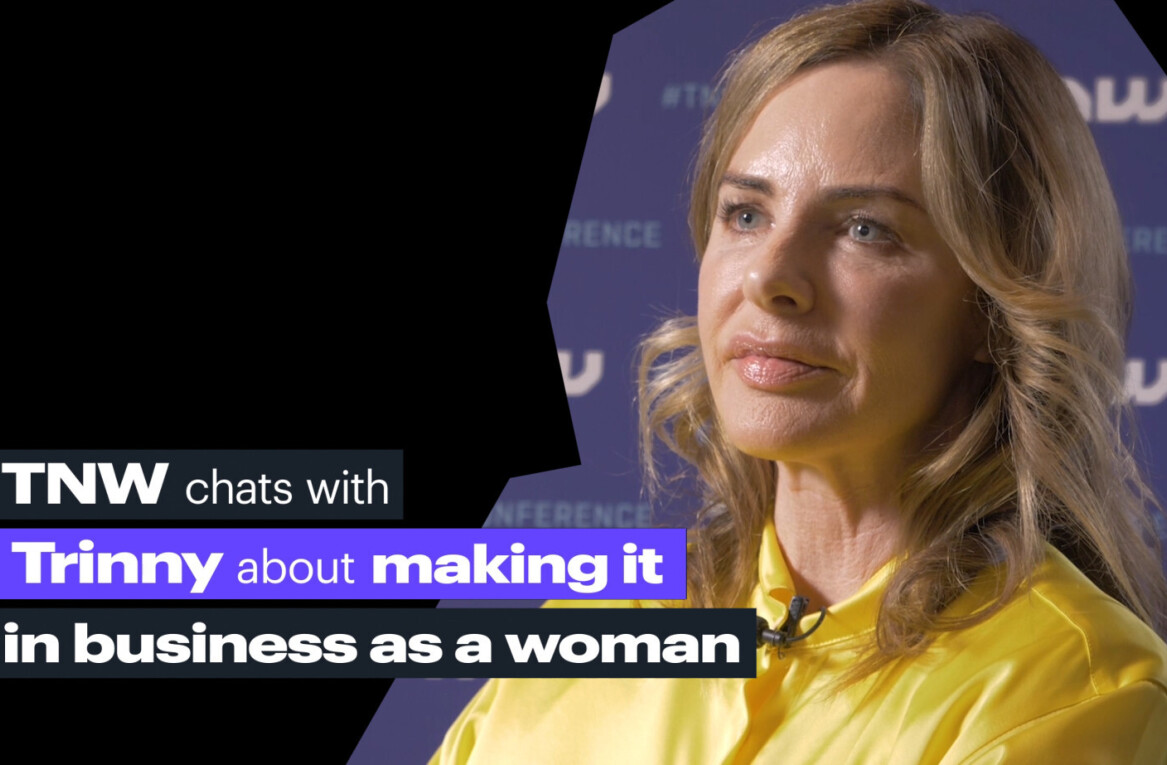
Did you know Tamar Yehoshua, Slack’s Chief Product Officer, is speaking at TNW2020 this year? Check out their session on ‘Human-centricity: building products with customers’ here.
If companies had faces, the months of lockdown would show a decade’s worth of age. Not only has the pandemic completely upended how we work; it’s forced us to re-examine our roles as employers and employees, our goals, our values, and how we merge work and home life.
But as they say, with age (and wrinkles) comes wisdom. We’ve written at length about how businesses have responded to the global crisis. Now the question we’re asking ourselves is: What will this change in the long run? Are we looking at fundamental, system-wide changes in the way we work, or will things creep back to the way they were?
Increasingly, it seems like the former. In our Slack Sessions virtual event, which featured panel discussions with global business leaders, Greg Williams, the editor in chief of Wired UK, explored the future of work with Stuart Templeton, the head of Slack UK, and Barry O’Reilly, an entrepreneur, business advisor and best-selling author of Unlearn: Let Go of Past Success to Achieve Extraordinary Results. The event included a panel discussion with some of Slack’s biggest customers in the U.K., including the Financial Times, HSBC and department-store company John Lewis & Partners.
Several common themes emerged, such as the importance of agility, flat communication and asynchronous workstreams. We’re all learning—and unlearning—new ways of working, and these three trends will likely shape the future of work.
Trend 1: Agility is the new currency of business
Agility has emerged as a critical operating principle during the pandemic. Whereas once companies were hyper-focused on scale and growth, many have shifted their attention to fast adaptation. “The muscle you need to build is to continually adapt to changing circumstances,” O’Reilly says. “If you can build or cultivate that characteristic in [your company], it doesn’t matter what problems come at you.”
Many Slack customers flexed the agility muscle during the pandemic. For instance, the FT, a business news organization, launched a new content management system within the first week of lockdown. The new system allowed its journalists to transition to remote work without needing to use a VPN. The FT had been planning to make the transition prior to the pandemic, but the pandemic compressed the timeline, demanding a quick and agile response from the company.
We already had a live Slack instance, and the scalability was ready. We didn’t need to do much apart from really just put people on it. — Jamie Newham, Digital Collaboration Lead, HSBC
Multinational bank HSBC also executed a rapid pivot during the COVID-19 crisis. The bank was using Slack in its product development team before the pandemic. But once the company moved away from physical offices, Slack usage rose 30% for active users and daily messages shot up by 80%, all within the first month, according to Jamie Newham, the digital collaboration lead at HSBC. “We already had a live Slack instance, and the scalability was ready. We didn’t need to do much apart from really just put people on it,” he says.
These examples of corporate agility are not one-offs, says Williams: “The kinds of companies that are going to thrive … are looking for agility rather than scale, and distributed working fits perfectly in this paradigm.”
Such rapid mobilization will likely have lasting cultural effects too. Newham was astonished to see “what’s possible” when a company is forced to respond rapidly. He adds that there’s been a culture shift at HSBC as perceived roadblocks are overcome with a “you can get these things done” mentality. “I think that mindset has definitely changed us from being a classic bank to being more agile,” he says. In the future, “we have to accept a little bit more risk and do things to develop and change.”
Trend 2: Empowering teams to work asynchronously
Perhaps one of the biggest challenges for companies going remote for the first time is navigating presenteeism—the practice of staying in the office for appearance’s sake, even if you’re not really working. Not only will this practice wane in a post-coronavirus world, according to the panelists, but companies will also be more likely to accept that everyone works on different schedules.
This is especially true at fast-paced news organizations. “It’s obvious now that we’re not all working at the same time,” says Sarah Wells, a technical director for the FT. “We have to work out how we can make progress asynchronously. For instance, we had a meeting-heavy culture, and we really want to cut back on that.”
As a parent of school-age children, Claire Nelson, a product engineer at John Lewis & Partners, has keenly felt the need for flexible work schedules. “I used to go into the office really early and leave mid-afternoon,” she says. “Now homeschooling takes priority first thing in the morning. I’ve got my mobile next to me in case something urgent crops up, but ‘business as usual’ now starts two and a half hours later than it would have done previously for me.”
It’s obvious now that we’re not all working at the same time. We have to work out how we can make progress asynchronously. For instance, we had a meeting-heavy culture, and we really want to cut back on that. — Sarah Wells, Technical Director, Financial Times
On the flip side, Nelson has colleagues who start their days before their children wake up and then wrap up the workday early. “We’ve got lots of different working patterns, which we’re showing is achievable and hopefully sustainable,” she says.
Templeton thinks the pandemic is forcing companies to re-examine their goals altogether. “This is a time where we have to align ourselves around outcomes and become far more outcome-focused than office-focused,” he says. In other words, it doesn’t matter how hard you work or how long you spend in Slack, as long as you get the job done.
Trend 3: Staying connected through flat communication structures
As offices shut down, many companies adjusted their internal communication strategies to keep employees engaged and connected with one another. Prior to COVID-19, HSBC used what Newham describes as a “classic” model for employee communications: email. Now the bank’s communications team uses Slack channels for most of its announcements. “[Slack] allows people to interact with the communication rather than just reading it, which is very different and has had quite a big impact,” he says.
The pandemic has catalyzed changes that were already underway. The companies that are going to thrive and attract talent are going to be those that don’t go back to the old way of working. — Greg Williams, Editor in Chief, Wired UK
Not all communication needs to be (or should be) formal. Panelists agreed on the importance of scheduling more frequent check-ins with individuals and teams. At the FT, managers have buffered in more time during meetings for non-work chat. “For the first month, we had a lot of virtual team coffee mornings, but gradually people stopped coming,” Wells says. “So now we’ll just take a bit more time to talk about what’s happening in people’s lives.”
Another key to unlocking fluid communication is simply being accessible. “I really think the main thing is being there and being available,” Newham says, “and Slack really helps us to do that, rather than having to send an email or reach out to somebody in a complicated way. It has really changed how we work.”
A catalyst for change
For most companies, none of these trends are completely new. What is new is the speed at which we must respond and adapt, not just structurally as an organization, but culturally as well. “The pandemic has catalyzed changes that were already underway,” Williams says. “The companies that are going to thrive and attract talent are going to be those that don’t go back to the old way of working.”
This article was originally published on Slack’s blog by Sara Yin. You can read it here.
Get the TNW newsletter
Get the most important tech news in your inbox each week.





